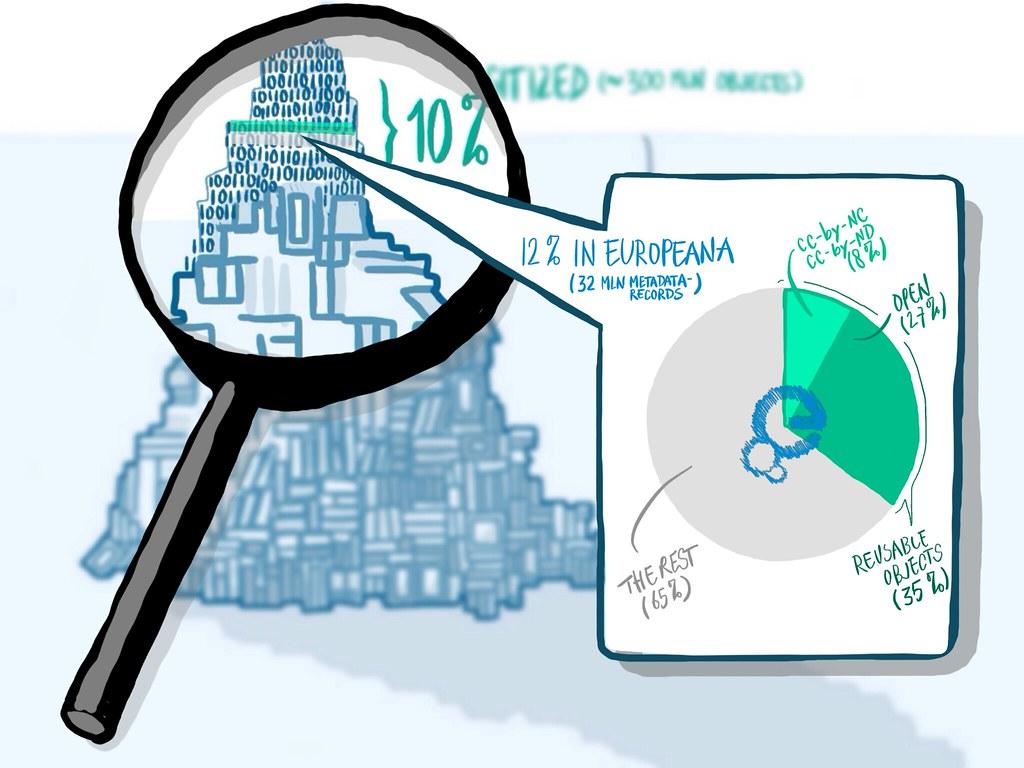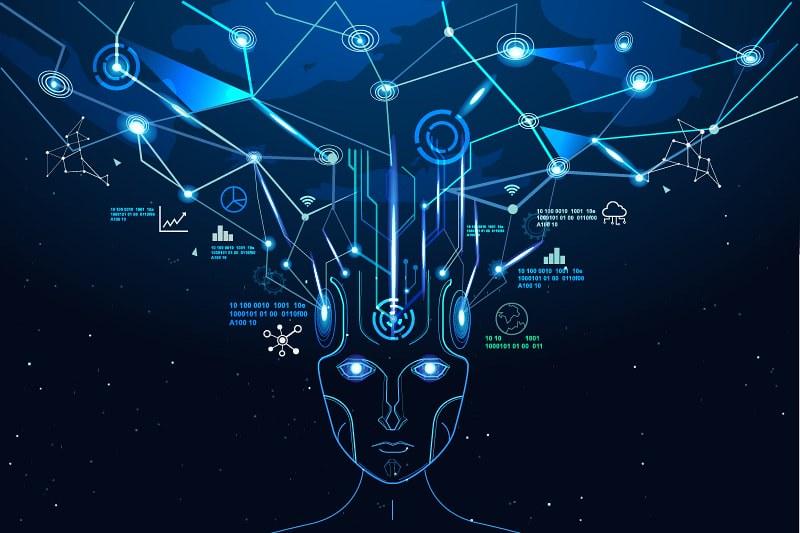Deep in the heart of the Amazon, where centuries-old trees tower like skyscrapers and the air pulses with the symphony of unseen creatures, a new sound is emerging – not the roar of chainsaws, but the quiet hum of progress. This is the story of how the digital revolution, like a valiant knight in a green armor, is making its mark in this verdant battlefield, fighting the notorious enemy – deforestation. Buckle up for an odyssey where technology meets ecology, where progress doesn’t mean destruction, and where, intriguingly, digitization beats deforestation.
Table of Contents
- Understanding the Relationship Between Digitization and Deforestation
- Exploring the Positive Impact of Digitization on Our Forests
- Case Studies: Successful Digital Solutions to Curb Deforestation
- How Artificial Intelligence Contributes to the Fight Against Deforestation
- Recommendations for Furthering Digital Efforts Against Deforestation
- Future Projections: The Digital Era Dares Deforestation to a Duel
- The Conclusion

Understanding the Relationship Between Digitization and Deforestation
Digitization has revolutionized the way we interact with information, resources, and the environment. With the rise of digital technologies, we have seen a significant shift in how businesses operate, how individuals communicate, and how data is managed. One of the key areas where digitization is making a positive impact is in the fight against deforestation.
Through the use of digital tools and platforms, companies and organizations are able to track and monitor deforestation in real-time, allowing for more effective and timely intervention measures. By leveraging data analytics and satellite imaging, stakeholders can identify areas at high risk of deforestation and take proactive steps to prevent further environmental degradation. This data-driven approach not only helps in preserving forests but also promotes sustainable land management practices.
Furthermore, digitization enables the dissemination of information and awareness campaigns on the importance of forest conservation. Through social media, websites, and mobile apps, individuals can learn about the impact of deforestation on biodiversity, climate change, and local communities. This increased awareness can lead to greater public support for forest protection initiatives and encourage responsible consumer choices that promote sustainability.

Exploring the Positive Impact of Digitization on Our Forests
The positive impact of digitization on our forests cannot be overstated. With the rapid advancements in technology, digitization has become a powerful tool in the fight against deforestation. One of the most effective ways digitization is helping to protect our forests is through the use of satellite imaging. This technology allows us to monitor deforestation activities in real-time, enabling quicker response and intervention to illegal logging and land clearing.
Furthermore, digitization has enabled the development of innovative solutions such as forest monitoring apps and platforms. These tools provide forest rangers and conservationists with valuable data on forest health, biodiversity, and potential threats. By utilizing these digital tools, we are able to better understand our forests and implement targeted conservation efforts to preserve their ecosystems.
Digitization has also revolutionized the way we approach reforestation efforts. Through the use of drones and AI-powered analytics, we are able to plant trees more efficiently and effectively. These technologies help us identify the best locations for planting, optimize tree species selection, and monitor the growth of newly planted forests. As a result, we are seeing a significant increase in reforestation success rates and the restoration of degraded forest landscapes.

Case Studies: Successful Digital Solutions to Curb Deforestation
One innovative approach to combat deforestation involves the use of satellite technology to monitor and track changes in forest cover. By leveraging satellite imagery and machine learning algorithms, conservationists are able to detect deforestation in real-time and take immediate action to address illegal logging activities. In the Amazon Rainforest, for example, this technology has helped authorities identify and arrest individuals involved in deforestation, leading to a significant decrease in forest loss.
Another successful digital solution is the development of mobile applications that enable local communities to report illegal logging and encroachment on forest land. These apps empower individuals to document and report suspicious activities, which can then be investigated by authorities. By engaging local residents in the monitoring and protection of their own forests, these apps have proven to be effective in deterring deforestation and promoting sustainable land management practices.
Furthermore, blockchain technology has been utilized to create transparent supply chains for timber and other forest products. By recording every transaction on a secure and immutable ledger, companies can ensure that their products are sourced from legal and sustainable sources. This not only helps combat deforestation but also provides consumers with the assurance that they are purchasing ethically sourced goods. Through these innovative digital solutions, we can work towards a future where forests are protected and preserved for generations to come.

How Artificial Intelligence Contributes to the Fight Against Deforestation
Artificial Intelligence (AI) is revolutionizing the fight against deforestation by providing innovative solutions to monitor and protect our forests. Through advanced algorithms and machine learning, AI technology can analyze vast amounts of data collected from satellites, drones, and sensors to detect signs of deforestation in real-time. This allows for quicker response times and more efficient resource allocation to combat illegal logging and land clearing.
One key way AI contributes to the fight against deforestation is through predictive analytics. By analyzing historical data on deforestation patterns and environmental factors, AI can predict where deforestation is likely to occur next. This proactive approach enables authorities and conservation organizations to take preventative measures and enforce stricter regulations in high-risk areas before irreversible damage is done to the ecosystem.
Furthermore, AI-powered image recognition technology plays a crucial role in monitoring and identifying illegal logging activities. By automatically analyzing satellite imagery and identifying changes in forest cover, AI can pinpoint suspicious activities and alert authorities to take action. This not only helps in preventing deforestation but also in holding perpetrators accountable for their actions.

Recommendations for Furthering Digital Efforts Against Deforestation
One key recommendation for furthering digital efforts against deforestation is the utilization of satellite imagery and remote sensing technologies. By leveraging these tools, we can monitor deforestation in real-time and pinpoint areas that require immediate intervention. This data can also help us track changes over time, identify trends, and ultimately develop more effective conservation strategies.
Another important step is to invest in cutting-edge data analysis techniques, such as machine learning and artificial intelligence. By harnessing the power of these technologies, we can process vast amounts of data quickly and accurately. This can enable us to predict deforestation hotspots, optimize resource allocation, and even identify potential illegal logging activities. By staying ahead of the curve in terms of data analysis, we can take proactive measures to combat deforestation effectively.
Furthermore, collaboration between governments, NGOs, and tech companies is crucial for the success of digital efforts against deforestation. By working together, we can combine resources, expertise, and technology to tackle this global challenge more efficiently. This multi-stakeholder approach can lead to innovative solutions, increased transparency, and greater impact in the fight against deforestation. Through collective action, we can harness the full potential of digitization to preserve our forests for future generations.

Future Projections: The Digital Era Dares Deforestation to a Duel
The digital era has ushered in a new wave of technology that is revolutionizing the way we interact with our environment. With the rise of digitization, there is a growing movement to combat deforestation and preserve our planet’s precious resources. Through innovative solutions and advancements in technology, we are now able to monitor and manage forests more effectively than ever before.
One key aspect of digitization that is making a significant impact on deforestation is the use of satellite imagery and remote sensing technology. These tools allow us to accurately track changes in forest cover, identify areas at risk of deforestation, and monitor the impact of human activity on our forests. By analyzing this data, we can develop targeted strategies to protect and restore our forests, ensuring their sustainability for future generations.
Furthermore, the development of digital platforms and apps is empowering individuals and communities to take action against deforestation. Through crowd-sourced data collection and real-time reporting, people can now actively participate in conservation efforts and hold businesses and governments accountable for their environmental impact. This democratization of information and activism is shifting the balance of power in favor of preserving our forests and combating deforestation.
The Conclusion
As we conclude this voyage into the forest of digitization and deforestation, we have seen how technology can be leveraged to harness progress while safeguarding our planet. We’ve imagined a world where pixels replace paper, and trees stand tall, breathing life into our ecosystems rather than being crushed to print our missives. The road to complete digitization may be long, winding and filled with challenges, but the prize at the end—the survival and wellbeing of our planet—is one worth striving for. As we wrap up, remember: in every click, swipe, or tag, you are partaking in a revolution—every byte of data saved is a leaf earned back for Mother Earth. It’s in our hands to make sure the digital age doesn’t beat the drum of progress at the expense of our forests. Rather, it must sing the melody of sustainable growth, where digitization beats deforestation. With the balance of both, we ensure our children a future—one where technology thrives amid a landscape greener than ever before. So, here’s to patchwork quilts of green canopies and the soft hum of data centres, co-existing, symbiotic, in an unwritten future that we now hold the power to inscribe.






